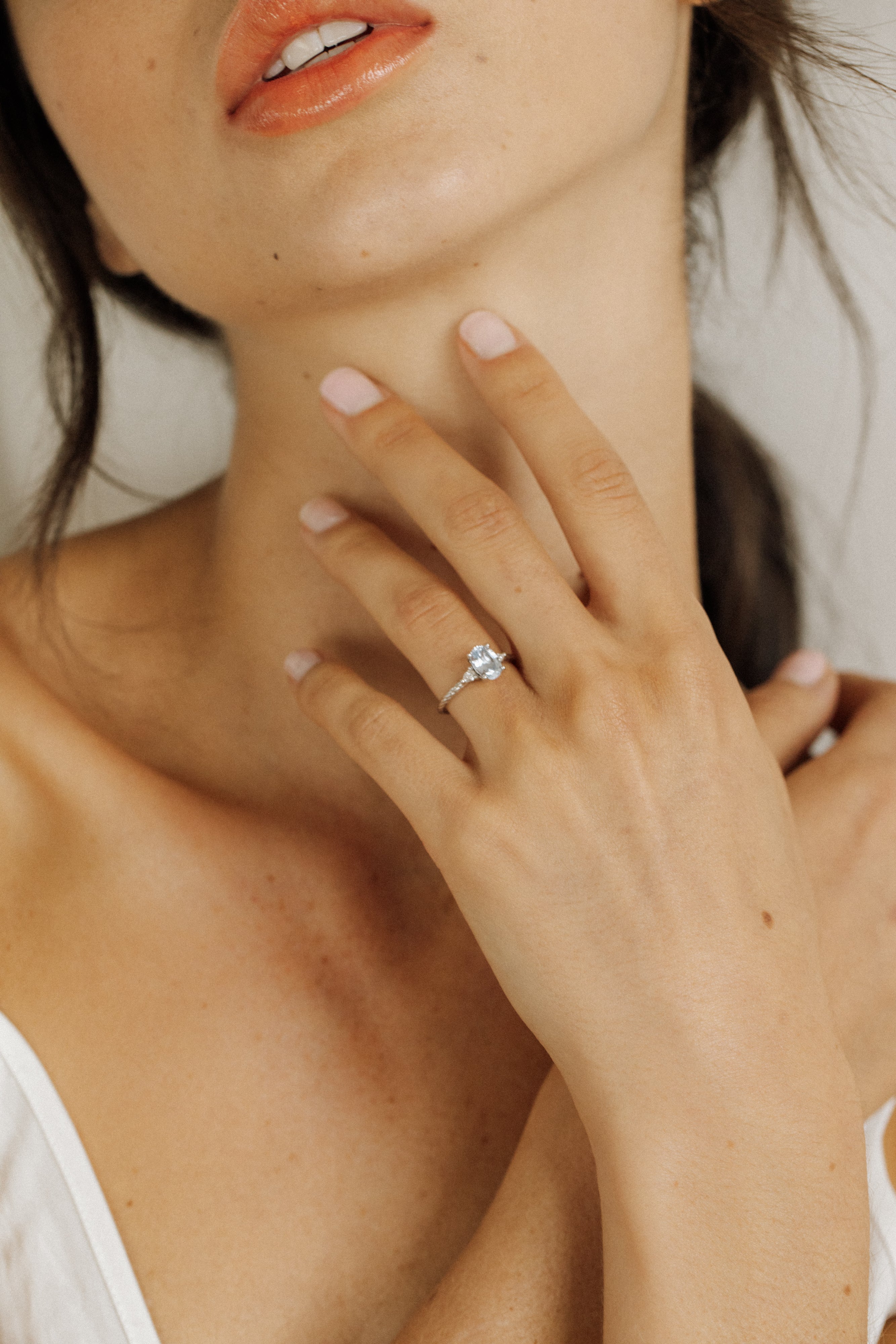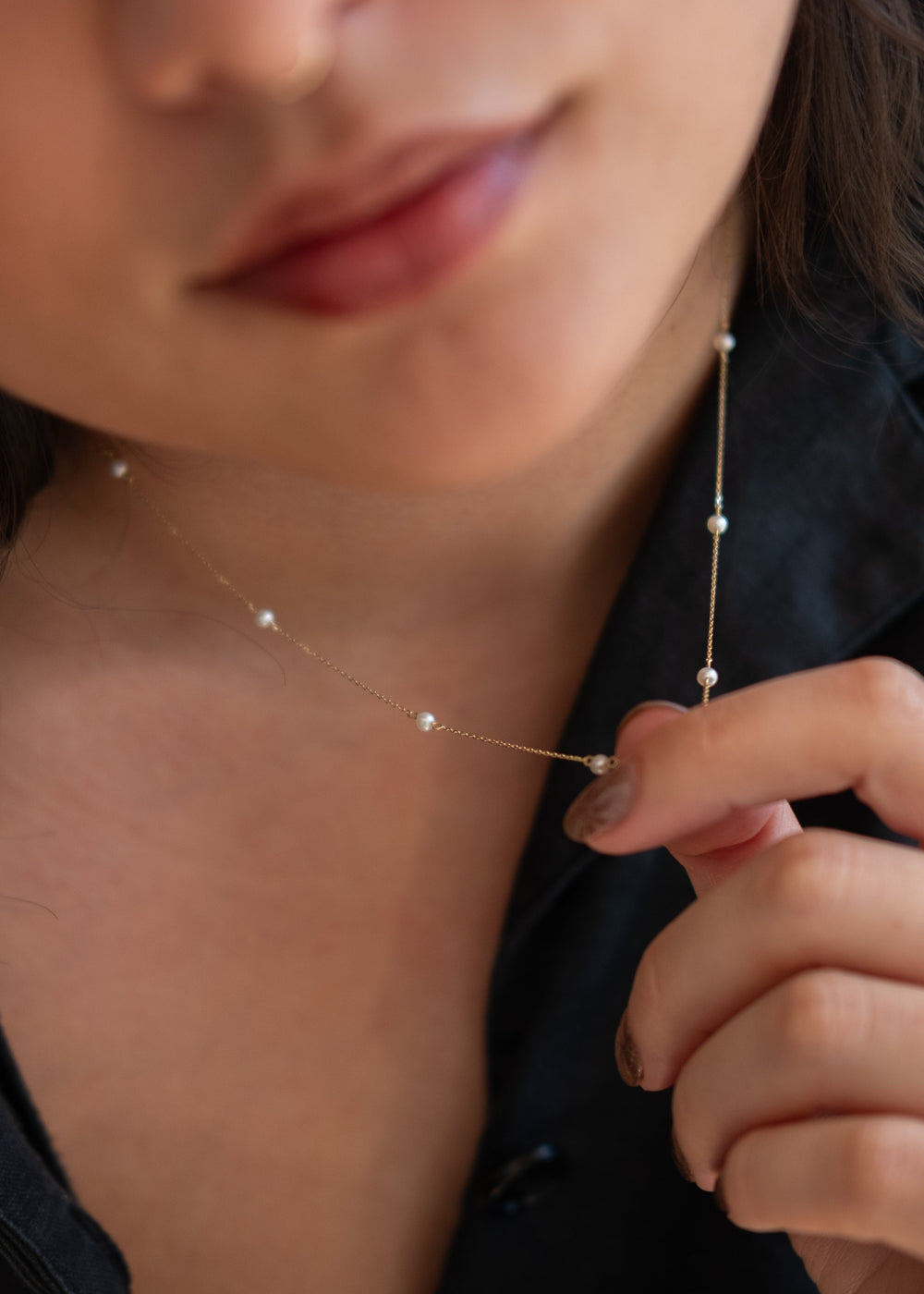Gaze into the depths of a rich, blue sapphire (here, check out our Josephine Ring if you're in a pinch). It's hypnotic, isn't it? That incredible, saturated colour is unparalleled in any other stone. It's unique, just like—basically everything else there is to know about sapphire. Infused frequently with titanium or beryllium, sapphire has long occupied key shares of the luxury jewelry market.
You've probably heard of the Star of India, or of Princess Diana's Sapphire and Diamond Suite (see them both here). It's easy to see why this gem is so popular: it really is striking. Pair the aesthetic with dramatic fanfare and royal affiliations, and we can begin to see why this corundum-based mineral is so important to fashion, romance, and collectors.
Here is everything you need to know about sapphires.

A twist on a diamond pendant with our sapphire necklace.
Origins
In 1865, prospectors discovered what is now the home of so called "Fancy Montana Sapphires" along the banks of the Missouri river. While searching for gold, many prospectors were frustrated by the pale coloured gems blocking their sluice boxes. But with heat treatment, the rich colour of the gems became more apparent, as did their value.
From their discovery, it was a short and meteoric rise to the favour of royalty. Quickly, sapphires became favourites of high ranking Americans and of British Royalty, with Stuart's Sapphire occupying a central position of the crown jewels.
Sapphires have long been thought to symbolize purity, loyalty, fidelity, and regality. The rich, deep blue most common in sapphires was also thought to ward off the "Evil Eye," keeping bad luck from striking the wearer. Most commonly, however, the rich blues of sapphires represent honesty and nobility. The usual!
"Its name comes from the Greek word sappheiros, which probably referred to lapis lazuli," writes GIA. But its multifaceted pedigree is not all that makes this such an interesting gem.

The Josephine Ring with an absolute clinic on the depths of sapphire.
Qualities
Most often, when someone says "sapphire," they are referring to the iconic blue sapphire found in Lady Di's jewelry. But in reality, sapphires can come in a range of colours and a range of saturations, from very pale to deep hues. Blues might be the most common variety, but there exists a salmon-coloured sapphire referred to as "padparadscha," which translates to "lotus flower" in Sinhalese.
Sapphires will most often be referred to as either "natural," "untreated," or both. These words, though they sound similar in concept, refer to two different things.
Natural sapphires have not been created in labs, in short. They were developed naturally, in the ground. These are by far the most valuable sapphires on the market. Its "treated" status refers to whether or not the gem has been exposed to any heat or chemical processes designed to enhance its colour.
When a sapphire is treated, it may be infused with other agents and substances. These substances, which are designed to fill cracks and inclusions, are usually coloured—as a result, when they diffuse through the entire stone, the natural and original character of that stone is lost. Be sure to keep this in mind when doing your shopping—if this doesn't matter to you, it will surely save you some money.

Blue sapphire studs to dress up an everyday look.
Care
Caring for sapphires is simple as they are a relatively hard gemstone. Use mild washing liquid in lukewarm water with a microfibre cloth to clean the gem, and gently wipe dry with a soft towel. For a deeper clean, you can let the gem soak for up to 15 minutes before giving it a quick polish. Easy peasy!

Our delicate Eva Ring.
Mythologies
Sapphires are the birth stone of September, and are widely also considered to have an affinity with the planet Saturn.
According to Jewels For Me, "Sapphires have been prized as great gemstones since 800BC. Rulers of ancient Persia believed the sky was painted blue by the reflection of sapphire stones. And a great poet once described the sapphire as “the blue of a clear sky just minutes after sundown.” Blue sapphires were a holy stone to the catholic church and to Ancient Persians, who believed they made the sky blue with their reflections."
The richness of the lore and mythology of sapphire is perhaps greater than every other gemstone (perhaps save for ruby, a beryl compound), making it an excellent buy for romantic folks that are preoccupied with the glories of days past.
Would you wear sapphire? Let us know below!
xo Evorden




Leave a comment